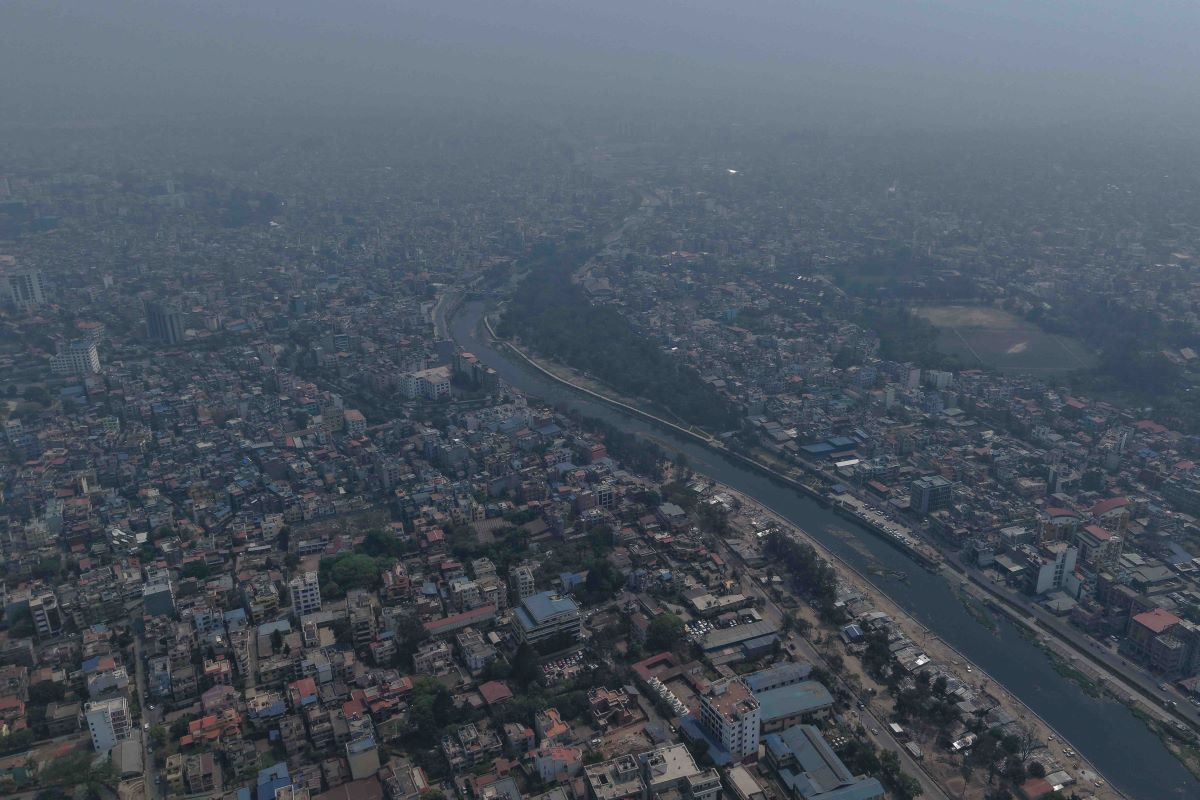

KATHMANDU: The air pollution in Kathmandu Valley is worsening at an alarming pace. As per the Air Quality Index (AQI) reading taken at 7 AM on Thursday, pollution levels in the valley have surpassed the hazardous threshold.
Currently, Kathmandu ranks as the second most polluted city in the world. Baghdad, the capital of Iraq, holds the top position, while New Delhi, India’s capital, is in third place.
Experts believe that the prolonged dry spell has led to an accumulation of dust in the atmosphere, significantly contributing to the valley’s pollution. Additionally, smoke from wildfires in surrounding forests has further exacerbated the situation.
At 7 AM today, Kathmandu’s AQI was recorded at 352, indicating a dangerously high level of pollution.
In comparison, Baghdad’s AQI stands at a staggering 973, while New Delhi reports an AQI of 198. Health professionals warn that Kathmandu’s deteriorating air quality poses severe health risks.
The Ministry of Health issued a statement on Thursday evening, noting that Nepal’s air ranks among the world’s most hazardous and urging the public to take necessary precautions.
Due to the worsening air conditions, the government has advised citizens to limit outdoor activities, especially in the morning when pollution levels peak.
Medical experts recommend minimizing exposure to polluted air to prevent respiratory and cardiovascular complications.
According to World Health Organization (WHO) guidelines, an AQI below 35 is considered safe for human health, while levels up to 50 remain within acceptable limits.
However, AQI values beyond 50 increasingly pose health risks. A reading between 51 and 100 serves as a cautionary signal, particularly for vulnerable groups, while an AQI ranging from 101 to 150 can negatively impact individuals with preexisting respiratory or heart conditions. When AQI levels reach between 151 and 200, air quality becomes unhealthy for all age groups.
Beyond this, an AQI of 201 to 300 is classified as extremely unhealthy, while levels between 301 and 400 are deemed hazardous. An AQI exceeding 400 is categorized as highly dangerous.
The Air Quality Management Action Plan for Kathmandu Valley (2076 BS) states that any AQI measurement above 300 is considered a disaster.
Environmental specialists and policymakers stress the urgent need for effective measures, including reducing vehicle emissions, controlling dust pollution, and expanding green spaces to combat the valley’s deteriorating air quality.